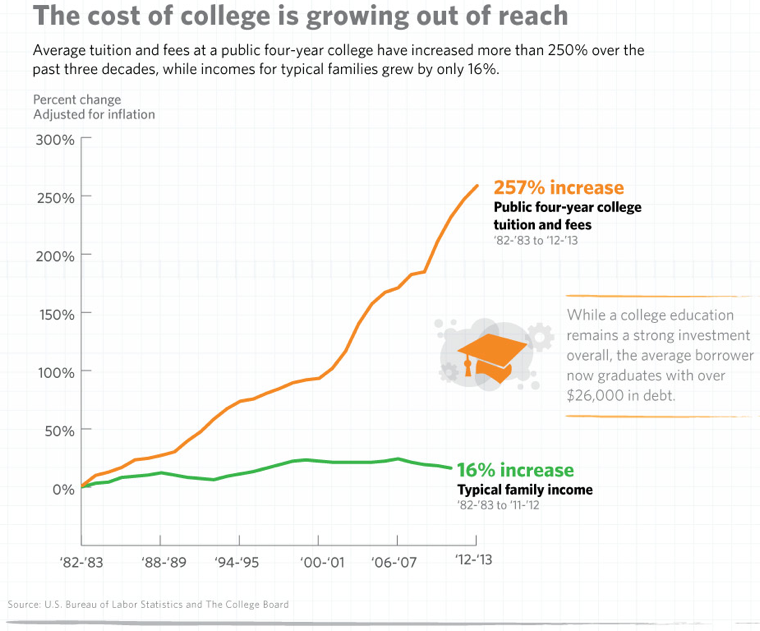Can the White House Reduce the Cost of College by Using Big Data?
President Barack Obama’s recent announcement about education reform targeted tuition as a key issue and offered technology, specifically data, as a way to address the rising cost of college. “Higher education should not be a luxury. It is an economic imperative that every family in America should be able to afford,” he explained to a group of supporters at the University of Buffalo.

The cost of college is growing faster than some students can keep up. Northern Illinois University reports that the “cost of tuition at public four-year colleges is up 27 percent over the past five years.” So what, exactly, did the White House propose in order to address this pressing issue?
Collect and Analyze Data to Inform Students
The crux of this plan relies on collecting data about tuition costs, graduation rates and loan debt. The government hopes to combine and analyze this data to help students understand which schools provide, in the president’s words, “the bigger bang for the buck.”
“We support data analysis and we support transparency, but it is hard to imagine that you can develop a rating or a ranking of institutions on the basis of an extensive amount of data, and right now the data available [are] seriously limited.”
Molly Broad, American Council on Education via NPR
President Obama also made it clear that schools that consistently rank well will receive more public funding than schools that don’t do well. According to the White House, “Nearly $150 billion in federal financial aid is allocated to colleges yearly based on the number of students they enroll, not the number who earn degrees.” Under the new plan, which is set to begin in 2015, colleges that rank well in the new scoring system and improve graduation rates will be given priority when it comes to taxpayer dollars.
How Accurate Will the Rating System Be?
The College Scorecard has already begun collecting the necessary data, but as Nick Anderson and Philip Rucker pointed out in the Washington Post, flawed data could have a significant impact on students’ college choices:
The influential U.S. News & World Report college rankings have shown that the very act of publishing such analyses often has a profound effect as colleges adjust their admissions and financial policies in an effort to stand out from the crowd. Critics say that ratings are often based on flawed data.
Exactly how to compare colleges and judge outcomes is a matter of fierce debate within academia. Many colleges can’t even agree on which schools are their peers. There are major questions about how to calculate graduation rates and measure the earnings potential of graduates.
“The devil is in the details. How do you define value?” asked Sarah L. Flanagan, vice president for government relations for the National Association of Independent Colleges and Universities. She wondered if some colleges would be penalized under a ratings system that did not take into account the modest salaries of graduates entering public service, religious ministries or careers in the arts.
What initially seems like a simple data set soon appears to be extraordinarily complex. The effect on schools that rank poorly is significant, which is why the data and the process for analysis must be transparent. Is two years enough time to put together a system for collecting, processing and publishing accurate data? These are the same questions that IT professionals are already asking about other data sets, although the White House is working on a much larger scale.
Is data the answer to reducing the cost of college? Is this measure strong enough to have an impact? Let us know in the Comments section.







